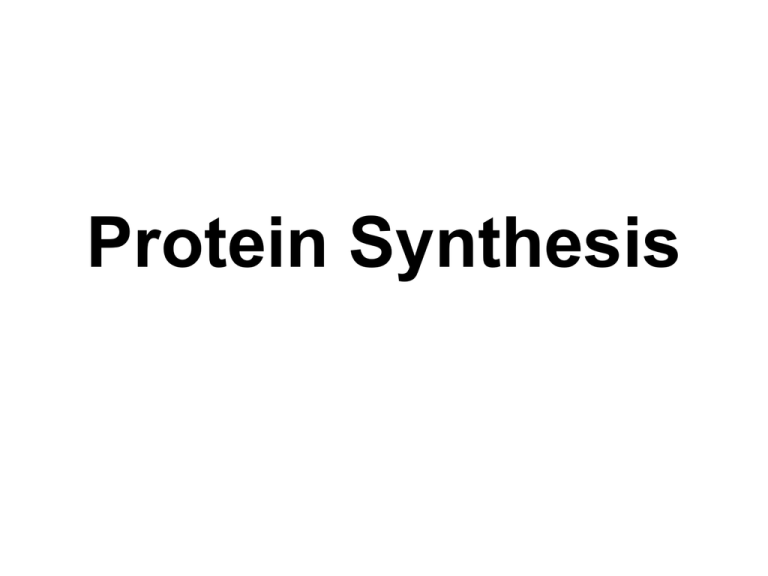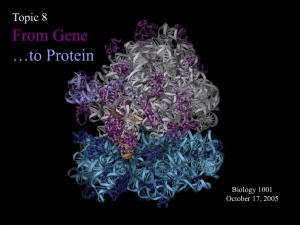Protein Synthesis
advertisement

Protein Synthesis The DNA Code • The order of bases along the DNA strand codes for the order in which amino acids are chemically joined together to form a polypeptide • Protein synthesis involves two types of nucleic acids: DNA (deoxyribonucleic acid) RNA (ribonucleic acid) RNA • RNA, like DNA, is a polymer formed by a sequence of nucleotides • Three Types of RNA: messenger RNA (mRNA) transfer RNA (tRNA) ribosomal RNA (rRNA) Differences Between DNA and RNA DNA double-stranded RNA single-stranded sugar = deoxyribose sugar = ribose bases = A,T,C,G bases = A,U,C,G (uracil takes the place of thymine) Protein Synthesis involves two processes: 1. Transcription: the copying of the genetic message (DNA) into a molecule of mRNA 2. Translation: mRNA is used to assemble an amino acid sequence into a polypeptide Transcription • occurs in the nucleus of the cell 1) DNA strand separates and serves as a template (pattern) for mRNA assembly 2) free mRNA nucleotides match up to the exposed nucleotides on the DNA strand http://www.johnkyrk.com/DNAtranscription.html 3) mRNA strand leaves the DNA strand when a “stop codon” is reached 4) the mRNA strand carries the code for the production of one polypeptide A sequence of 3 bases called a codon codes for one amino acid Translation • occurs in the cytoplasm of the cell, at the ribosome • 1) mRNA moves out of the nucleus and into the cytoplasm to a ribosome 2) mRNA is “read” by the ribosome and is converted to a chain of amino acids with the help of tRNA http://www.johnkyrk.com/DNAtranslation.html 3) As the mRNA moves across the ribosome, tRNAs temporarily attach. The amino acids are joined by a chemical bond by enzymes until a stop codon is reached 4) a polypeptide is produced Animations • http://www.lewport.wnyric.org/JWANAMAKER/animations/Protein%20Synth esis%20-%20long.html • http://www.ncc.gmu.edu/dna/ANIMPROT.htm






